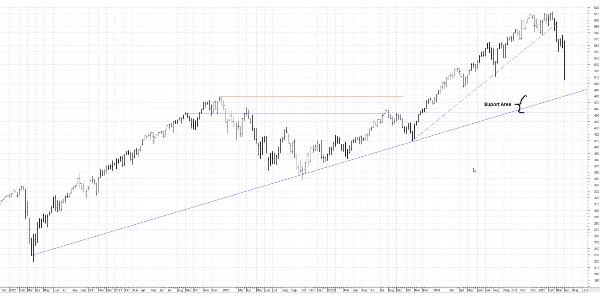The lumber industry plays a critical role in the global economy, serving as a cornerstone for construction, furniture manufacturing, and paper production. With the rising demand for housing and infrastructure development, lumber remains a sought-after commodity, contributing significantly to economic growth. However, the industry is subject to fluctuations influenced by factors like seasonal cycles, environmental regulations, and global trade dynamics. Understanding the significance of lumber in these sectors provides investors with insights into its potential as an investment.
Investors are increasingly drawn to lumber stocks due to their connection to broader economic trends and the growing focus on sustainability. As construction projects surge and eco-friendly practices gain traction, lumber companies are adapting by implementing responsible forestry and innovative production methods. These developments have positioned lumber stocks as potential long-term growth opportunities. This article explores the factors driving interest in lumber stocks while helping readers evaluate whether these investments align with their financial goals and risk tolerance.
Understanding the Lumber Industry
The lumber market is primarily driven by the robust demand from the housing and construction sectors. As population growth fuels the need for residential and commercial spaces, the construction of new homes, renovation projects, and large-scale infrastructure initiatives like bridges and highways keep lumber in high demand. Additionally, its integral role in furniture manufacturing and packaging industries further solidifies its position as an essential commodity. Investors tracking trends like housing starts and government spending on infrastructure projects often view lumber stocks as a way to capitalize on these expanding markets.
The lumber industry operates within a seasonal and cyclical framework, characterized by fluctuations in demand and supply. During warmer months, construction activity typically peaks, leading to heightened lumber consumption, whereas demand slows during colder months. Moreover, the cyclical nature of the industry ties it closely to broader economic conditions—booming economies tend to drive construction and, in turn, lumber sales, while economic downturns may result in reduced activity. Understanding these seasonal and cyclical trends helps investors anticipate market behavior and make informed decisions.
On a global scale, lumber demand is influenced by international trade policies and sustainability initiatives. Countries with rapidly growing economies, such as China and India, often show increased demand for imported lumber to support their infrastructure and housing needs. Meanwhile, environmental considerations have prompted many governments to implement stricter policies on deforestation and promote sustainable practices, which can affect supply chains and production costs. By keeping an eye on these global trends, investors can better evaluate how such factors may impact the performance of lumber stocks in both domestic and international markets.
Factors Affecting Lumber Stock Performance
Lumber stock performance is heavily influenced by the demand generated from housing and construction sectors. The ongoing trends in homebuilding, spurred by population growth and urban expansion, play a significant role in shaping the industry’s trajectory. Renovation projects also contribute to steady demand as homeowners update or improve existing properties. The strong connection between lumber and construction makes these stocks attractive for investors tracking growth in these areas, especially during periods of heightened construction activity.
Supply chain dynamics are equally crucial in affecting lumber stocks, as efficient forestry management and the availability of raw materials can significantly impact company operations. Sustainable practices in forest management are gaining prominence, ensuring that resources are replenished while meeting demand. Factors like transportation costs, labor availability, and unexpected disruptions, such as natural disasters, further highlight the importance of supply chain stability. Investors often monitor these aspects to assess whether companies can navigate challenges effectively and maintain profitability.
Economic influences, such as interest rates, inflation, and overall economic growth, play a pivotal role in determining lumber stock performance. High interest rates can slow down homebuilding and construction activities, leading to reduced demand for lumber. Conversely, economic growth tends to spur construction projects, supporting the industry. Environmental regulations and sustainability efforts are also significant; many lumber companies are adopting eco-friendly practices to comply with regulatory standards while appealing to environmentally conscious consumers. These initiatives may increase costs in the short term but can enhance brand reputation and long-term market resilience. Investors who consider these factors gain a clearer understanding of the complexities surrounding lumber stocks.
Advantages of Investing in Lumber Stocks
Investing in lumber stocks offers the potential for long-term growth, largely driven by the consistent demand for wood products in construction, furniture, and paper industries. The need for housing and infrastructure development ensures that lumber remains a vital commodity, even during periods of economic fluctuation. As urbanization continues and eco-friendly trends drive innovation in sustainable materials, lumber stocks have an opportunity to grow steadily over time, making them appealing for investors with a long-term outlook.
Another advantage of lumber stocks is their potential to provide dividend income, especially through established companies in the sector. Many large lumber firms distribute dividends to their shareholders, offering investors an additional source of passive income. This can be particularly attractive for individuals seeking stability and regular returns in their portfolios. Coupled with the possibility of capital appreciation, dividend-paying lumber stocks strike a balance between growth and income.
Lumber stocks also offer diversification benefits for portfolios, as they are tied closely to broader economic trends. Unlike tech or consumer sectors, lumber stocks are heavily influenced by housing starts, infrastructure investment, and global economic policies. This makes them an excellent choice for investors looking to hedge against market volatility by adding exposure to materials and construction. Their unique connection to macroeconomic factors gives investors an opportunity to align their portfolios with global growth dynamics while capitalizing on the evolving needs of the industry.
Risks Associated with Lumber Stocks
Lumber stocks are subject to significant volatility due to cyclical market conditions. As the lumber industry is heavily influenced by housing starts and construction projects, periods of economic downturn can lead to reduced demand and lower stock prices. Additionally, the seasonal nature of the industry—where activity tends to peak during warmer months—contributes to the fluctuations in lumber stock performance. These cyclical challenges make it crucial for investors to be aware of the timing and trends in the market.
Global economic shifts also pose risks to lumber stocks. Factors such as changes in trade policies, foreign exchange rates, and international demand can significantly impact the industry's profitability. For instance, a slowdown in global construction activity or trade restrictions on lumber exports can lead to decreased revenue for companies reliant on international markets. Investors need to monitor economic conditions and geopolitical factors to anticipate potential disruptions that may affect stock performance.
Environmental concerns and natural disasters further add to the risks associated with lumber stocks. With governments worldwide implementing stricter regulations on deforestation and emphasizing sustainable practices, companies may face higher operational costs to comply with these standards. Meanwhile, unforeseen events like wildfires or hurricanes can disrupt supply chains and lead to shortages of raw materials. These factors highlight the importance of assessing a company’s resilience and adaptability before investing in lumber stocks. By considering these risks, investors can make more informed decisions in this volatile sector.
Leading Lumber Companies to Watch
The lumber industry is home to several prominent companies that have established themselves as key players in the market. Weyerhaeuser, for example, is one of the largest private owners of timberlands globally and operates across multiple segments, including sustainable forestry and real estate. Known for its strong commitment to environmental stewardship and innovative practices, Weyerhaeuser has consistently delivered returns while appealing to eco-conscious investors. Its extensive portfolio of timberlands and efficient operations make it a noteworthy option for those interested in lumber stocks.
West Fraser Timber is another leading name in the lumber industry, recognized for its diversified product offerings and international reach. The company specializes in lumber, panels, and pulp, with operations in North America and Europe. West Fraser has a history of strategic acquisitions and investments in technology to enhance productivity and reduce costs, contributing to steady growth. Its proactive approach to expanding market share and adapting to global demands makes it a compelling choice for investors seeking exposure to the lumber sector.
Canfor, a Canadian-based company, rounds out the list of prominent lumber firms. With a focus on high-quality products, Canfor has established itself as a reliable supplier for construction and home improvement projects. The company emphasizes sustainability in forestry management and has developed strategic partnerships to maintain a competitive edge. Its commitment to innovation and strong performance in international markets position Canfor as an attractive investment for those looking to tap into the evolving lumber industry. Investors can evaluate these companies' growth strategies and market strengths to identify opportunities that align with their goals.
Tips for Investing in Lumber Stocks
Investing in lumber stocks requires conducting thorough market research to understand industry trends and company performance. This involves tracking housing and construction data, such as new home starts and renovation spending, which can indicate demand for lumber. Additionally, staying informed about macroeconomic conditions and global trade policies will help investors anticipate potential shifts in the market. By digging deep into industry reports and market forecasts, investors can identify opportunities and avoid potential pitfalls.
Evaluating key financial metrics is crucial when selecting lumber stocks. Metrics such as price-to-earnings (P/E) ratios provide insight into a company's valuation, while dividend yields can reveal potential passive income opportunities. Revenue growth trends also highlight how well a company is capitalizing on market demand. By comparing these metrics across multiple companies, investors can determine which stocks offer the best mix of value, growth, and income potential.
Diversification is essential for reducing risk, even within the materials sector. Rather than concentrating solely on individual lumber stocks, investors can explore broader options such as timber-focused ETFs. These exchange-traded funds often include a mix of companies involved in lumber production, forestry management, and related industries, offering exposure to the sector while minimizing the impact of any single stock's performance. This strategy helps investors balance potential returns with risk mitigation, making it a smart move for both seasoned and novice investors.
Alternatives to Lumber Stocks
For investors seeking alternatives to lumber stocks, commodities like timber-focused exchange-traded funds (ETFs) or real estate investment trusts (REITs) offer compelling options. Timber ETFs provide diversified exposure to the forestry and wood products sectors by bundling multiple companies into a single investment vehicle. This minimizes the risks associated with individual stocks while still allowing investors to benefit from the broader industry’s performance. Similarly, timberland REITs, which focus on owning and managing forested land, can offer steady income through dividends and long-term value appreciation tied to land assets.
Another approach is to explore broader materials and construction-related stocks that include sectors adjacent to lumber production. For instance, companies specializing in concrete, steel, or other building materials often benefit from the same market trends driving demand for lumber, such as housing growth and infrastructure development. This broader investment strategy enables diversification across multiple industries within the materials sector, reducing exposure to the cyclical fluctuations inherent in the lumber market.
By considering these alternatives, investors can achieve greater flexibility and balance in their portfolios. Whether opting for timber ETFs, REITs, or other materials-related stocks, these options allow investors to maintain exposure to construction-driven growth while mitigating some of the risks associated with the highly cyclical nature of lumber stocks. This diversified approach can be especially beneficial for those looking to build a more resilient investment strategy.
Final Thoughts
Lumber stocks present a compelling investment opportunity for those seeking to capitalize on the consistent demand for wood products, driven by housing growth, construction, and infrastructure projects. While these stocks offer potential for long-term growth, dividend income, and portfolio diversification, they also come with risks such as market volatility, economic fluctuations, and environmental challenges. Understanding the cyclical nature of the industry and evaluating key factors like supply chain dynamics and sustainability initiatives are critical for making informed decisions.
For investors looking to broaden their exposure, alternatives like timber-focused ETFs and REITs provide additional ways to benefit from the lumber industry's growth while mitigating risk. Prominent companies such as Weyerhaeuser, West Fraser Timber, and Canfor serve as strong candidates to explore within this sector. Whether you're interested in direct lumber stock investments or considering diversified options, staying informed and aligning your strategy with your financial goals can help you navigate the complexities of this dynamic market and make the most of its opportunities.
FAQs about Lumber Stocks
Curious about lumber stocks? We’ve got you covered! From the impact of housing trends and cyclical market conditions to the role of environmental regulations and supply chain challenges, these questions delve into everything you need to know. Learn about the benefits of diversification through ETFs, alternatives like timber REITs, and what makes lumber stocks a unique investment opportunity. Whether you're exploring this sector for the first time or deepening your knowledge, these answers are here to guide you every step of the way.
Are lumber stocks recession-proof?
Lumber stocks are not entirely recession-proof due to their strong ties to the housing and construction sectors, which often experience downturns during economic recessions. Demand for lumber tends to decline when interest rates rise or when economic growth slows, as these factors can reduce homebuilding and renovation activities. Additionally, the cyclical nature of the lumber industry makes it susceptible to fluctuations in supply and demand. However, some established lumber companies with diversified operations and dividend-paying stocks may offer a degree of stability, making them relatively resilient compared to smaller or less diversified players in the industry.
How do environmental regulations affect lumber companies?
Environmental regulations significantly impact lumber companies by shaping their operational practices and cost structures. Stricter policies on deforestation and sustainability require companies to adopt eco-friendly methods, such as responsible forestry management and reduced carbon emissions, which can increase production costs. These regulations also influence supply chains, as companies must ensure compliance with legal standards for sourcing raw materials. While these measures may pose short-term challenges, they encourage long-term benefits by promoting sustainable practices, enhancing brand reputation, and appealing to environmentally conscious consumers. Adapting to these evolving regulations is essential for lumber companies to remain competitive in a market increasingly focused on sustainability.
Is it better to invest in lumber ETFs or individual stocks?
Deciding between lumber ETFs and individual stocks depends on your investment goals and risk tolerance. Lumber ETFs offer diversification by bundling multiple companies within the lumber and forestry sectors, reducing the impact of poor performance from any single stock. They are ideal for investors seeking broad exposure to the industry with less effort in research and management. On the other hand, individual stocks allow for targeted investments in specific companies, offering the potential for higher returns if you can identify strong performers. However, this approach requires thorough research and carries higher risk due to the lack of diversification. Balancing these factors can help you determine which option aligns better with your financial strategy.






























The lumber industry plays a critical role in the global economy, serving as a cornerstone for construction, furniture manufacturing, and paper production. With the rising demand for housing and infrastructure development, lumber remains a sought-after commodity, contributing significantly to economic growth. However, the industry is subject to fluctuations influenced by factors like seasonal cycles, environmental regulations, and global trade dynamics. Understanding the significance of lumber in these sectors provides investors with insights into its potential as an investment.
Investors are increasingly drawn to lumber stocks due to their connection to broader economic trends and the growing focus on sustainability. As construction projects surge and eco-friendly practices gain traction, lumber companies are adapting by implementing responsible forestry and innovative production methods. These developments have positioned lumber stocks as potential long-term growth opportunities. This article explores the factors driving interest in lumber stocks while helping readers evaluate whether these investments align with their financial goals and risk tolerance.
Understanding the Lumber Industry
The lumber market is primarily driven by the robust demand from the housing and construction sectors. As population growth fuels the need for residential and commercial spaces, the construction of new homes, renovation projects, and large-scale infrastructure initiatives like bridges and highways keep lumber in high demand. Additionally, its integral role in furniture manufacturing and packaging industries further solidifies its position as an essential commodity. Investors tracking trends like housing starts and government spending on infrastructure projects often view lumber stocks as a way to capitalize on these expanding markets.
The lumber industry operates within a seasonal and cyclical framework, characterized by fluctuations in demand and supply. During warmer months, construction activity typically peaks, leading to heightened lumber consumption, whereas demand slows during colder months. Moreover, the cyclical nature of the industry ties it closely to broader economic conditions—booming economies tend to drive construction and, in turn, lumber sales, while economic downturns may result in reduced activity. Understanding these seasonal and cyclical trends helps investors anticipate market behavior and make informed decisions.
On a global scale, lumber demand is influenced by international trade policies and sustainability initiatives. Countries with rapidly growing economies, such as China and India, often show increased demand for imported lumber to support their infrastructure and housing needs. Meanwhile, environmental considerations have prompted many governments to implement stricter policies on deforestation and promote sustainable practices, which can affect supply chains and production costs. By keeping an eye on these global trends, investors can better evaluate how such factors may impact the performance of lumber stocks in both domestic and international markets.
Factors Affecting Lumber Stock Performance
Lumber stock performance is heavily influenced by the demand generated from housing and construction sectors. The ongoing trends in homebuilding, spurred by population growth and urban expansion, play a significant role in shaping the industry’s trajectory. Renovation projects also contribute to steady demand as homeowners update or improve existing properties. The strong connection between lumber and construction makes these stocks attractive for investors tracking growth in these areas, especially during periods of heightened construction activity.
Supply chain dynamics are equally crucial in affecting lumber stocks, as efficient forestry management and the availability of raw materials can significantly impact company operations. Sustainable practices in forest management are gaining prominence, ensuring that resources are replenished while meeting demand. Factors like transportation costs, labor availability, and unexpected disruptions, such as natural disasters, further highlight the importance of supply chain stability. Investors often monitor these aspects to assess whether companies can navigate challenges effectively and maintain profitability.
Economic influences, such as interest rates, inflation, and overall economic growth, play a pivotal role in determining lumber stock performance. High interest rates can slow down homebuilding and construction activities, leading to reduced demand for lumber. Conversely, economic growth tends to spur construction projects, supporting the industry. Environmental regulations and sustainability efforts are also significant; many lumber companies are adopting eco-friendly practices to comply with regulatory standards while appealing to environmentally conscious consumers. These initiatives may increase costs in the short term but can enhance brand reputation and long-term market resilience. Investors who consider these factors gain a clearer understanding of the complexities surrounding lumber stocks.
Advantages of Investing in Lumber Stocks
Investing in lumber stocks offers the potential for long-term growth, largely driven by the consistent demand for wood products in construction, furniture, and paper industries. The need for housing and infrastructure development ensures that lumber remains a vital commodity, even during periods of economic fluctuation. As urbanization continues and eco-friendly trends drive innovation in sustainable materials, lumber stocks have an opportunity to grow steadily over time, making them appealing for investors with a long-term outlook.
Another advantage of lumber stocks is their potential to provide dividend income, especially through established companies in the sector. Many large lumber firms distribute dividends to their shareholders, offering investors an additional source of passive income. This can be particularly attractive for individuals seeking stability and regular returns in their portfolios. Coupled with the possibility of capital appreciation, dividend-paying lumber stocks strike a balance between growth and income.
Lumber stocks also offer diversification benefits for portfolios, as they are tied closely to broader economic trends. Unlike tech or consumer sectors, lumber stocks are heavily influenced by housing starts, infrastructure investment, and global economic policies. This makes them an excellent choice for investors looking to hedge against market volatility by adding exposure to materials and construction. Their unique connection to macroeconomic factors gives investors an opportunity to align their portfolios with global growth dynamics while capitalizing on the evolving needs of the industry.
Risks Associated with Lumber Stocks
Lumber stocks are subject to significant volatility due to cyclical market conditions. As the lumber industry is heavily influenced by housing starts and construction projects, periods of economic downturn can lead to reduced demand and lower stock prices. Additionally, the seasonal nature of the industry—where activity tends to peak during warmer months—contributes to the fluctuations in lumber stock performance. These cyclical challenges make it crucial for investors to be aware of the timing and trends in the market.
Global economic shifts also pose risks to lumber stocks. Factors such as changes in trade policies, foreign exchange rates, and international demand can significantly impact the industry's profitability. For instance, a slowdown in global construction activity or trade restrictions on lumber exports can lead to decreased revenue for companies reliant on international markets. Investors need to monitor economic conditions and geopolitical factors to anticipate potential disruptions that may affect stock performance.
Environmental concerns and natural disasters further add to the risks associated with lumber stocks. With governments worldwide implementing stricter regulations on deforestation and emphasizing sustainable practices, companies may face higher operational costs to comply with these standards. Meanwhile, unforeseen events like wildfires or hurricanes can disrupt supply chains and lead to shortages of raw materials. These factors highlight the importance of assessing a company’s resilience and adaptability before investing in lumber stocks. By considering these risks, investors can make more informed decisions in this volatile sector.
Leading Lumber Companies to Watch
The lumber industry is home to several prominent companies that have established themselves as key players in the market. Weyerhaeuser, for example, is one of the largest private owners of timberlands globally and operates across multiple segments, including sustainable forestry and real estate. Known for its strong commitment to environmental stewardship and innovative practices, Weyerhaeuser has consistently delivered returns while appealing to eco-conscious investors. Its extensive portfolio of timberlands and efficient operations make it a noteworthy option for those interested in lumber stocks.
West Fraser Timber is another leading name in the lumber industry, recognized for its diversified product offerings and international reach. The company specializes in lumber, panels, and pulp, with operations in North America and Europe. West Fraser has a history of strategic acquisitions and investments in technology to enhance productivity and reduce costs, contributing to steady growth. Its proactive approach to expanding market share and adapting to global demands makes it a compelling choice for investors seeking exposure to the lumber sector.
Canfor, a Canadian-based company, rounds out the list of prominent lumber firms. With a focus on high-quality products, Canfor has established itself as a reliable supplier for construction and home improvement projects. The company emphasizes sustainability in forestry management and has developed strategic partnerships to maintain a competitive edge. Its commitment to innovation and strong performance in international markets position Canfor as an attractive investment for those looking to tap into the evolving lumber industry. Investors can evaluate these companies' growth strategies and market strengths to identify opportunities that align with their goals.
Tips for Investing in Lumber Stocks
Investing in lumber stocks requires conducting thorough market research to understand industry trends and company performance. This involves tracking housing and construction data, such as new home starts and renovation spending, which can indicate demand for lumber. Additionally, staying informed about macroeconomic conditions and global trade policies will help investors anticipate potential shifts in the market. By digging deep into industry reports and market forecasts, investors can identify opportunities and avoid potential pitfalls.
Evaluating key financial metrics is crucial when selecting lumber stocks. Metrics such as price-to-earnings (P/E) ratios provide insight into a company's valuation, while dividend yields can reveal potential passive income opportunities. Revenue growth trends also highlight how well a company is capitalizing on market demand. By comparing these metrics across multiple companies, investors can determine which stocks offer the best mix of value, growth, and income potential.
Diversification is essential for reducing risk, even within the materials sector. Rather than concentrating solely on individual lumber stocks, investors can explore broader options such as timber-focused ETFs. These exchange-traded funds often include a mix of companies involved in lumber production, forestry management, and related industries, offering exposure to the sector while minimizing the impact of any single stock's performance. This strategy helps investors balance potential returns with risk mitigation, making it a smart move for both seasoned and novice investors.
Alternatives to Lumber Stocks
For investors seeking alternatives to lumber stocks, commodities like timber-focused exchange-traded funds (ETFs) or real estate investment trusts (REITs) offer compelling options. Timber ETFs provide diversified exposure to the forestry and wood products sectors by bundling multiple companies into a single investment vehicle. This minimizes the risks associated with individual stocks while still allowing investors to benefit from the broader industry’s performance. Similarly, timberland REITs, which focus on owning and managing forested land, can offer steady income through dividends and long-term value appreciation tied to land assets.
Another approach is to explore broader materials and construction-related stocks that include sectors adjacent to lumber production. For instance, companies specializing in concrete, steel, or other building materials often benefit from the same market trends driving demand for lumber, such as housing growth and infrastructure development. This broader investment strategy enables diversification across multiple industries within the materials sector, reducing exposure to the cyclical fluctuations inherent in the lumber market.
By considering these alternatives, investors can achieve greater flexibility and balance in their portfolios. Whether opting for timber ETFs, REITs, or other materials-related stocks, these options allow investors to maintain exposure to construction-driven growth while mitigating some of the risks associated with the highly cyclical nature of lumber stocks. This diversified approach can be especially beneficial for those looking to build a more resilient investment strategy.
Final Thoughts
Lumber stocks present a compelling investment opportunity for those seeking to capitalize on the consistent demand for wood products, driven by housing growth, construction, and infrastructure projects. While these stocks offer potential for long-term growth, dividend income, and portfolio diversification, they also come with risks such as market volatility, economic fluctuations, and environmental challenges. Understanding the cyclical nature of the industry and evaluating key factors like supply chain dynamics and sustainability initiatives are critical for making informed decisions.
For investors looking to broaden their exposure, alternatives like timber-focused ETFs and REITs provide additional ways to benefit from the lumber industry's growth while mitigating risk. Prominent companies such as Weyerhaeuser, West Fraser Timber, and Canfor serve as strong candidates to explore within this sector. Whether you're interested in direct lumber stock investments or considering diversified options, staying informed and aligning your strategy with your financial goals can help you navigate the complexities of this dynamic market and make the most of its opportunities.
FAQs about Lumber Stocks
Curious about lumber stocks? We’ve got you covered! From the impact of housing trends and cyclical market conditions to the role of environmental regulations and supply chain challenges, these questions delve into everything you need to know. Learn about the benefits of diversification through ETFs, alternatives like timber REITs, and what makes lumber stocks a unique investment opportunity. Whether you're exploring this sector for the first time or deepening your knowledge, these answers are here to guide you every step of the way.
Are lumber stocks recession-proof?
Lumber stocks are not entirely recession-proof due to their strong ties to the housing and construction sectors, which often experience downturns during economic recessions. Demand for lumber tends to decline when interest rates rise or when economic growth slows, as these factors can reduce homebuilding and renovation activities. Additionally, the cyclical nature of the lumber industry makes it susceptible to fluctuations in supply and demand. However, some established lumber companies with diversified operations and dividend-paying stocks may offer a degree of stability, making them relatively resilient compared to smaller or less diversified players in the industry.
How do environmental regulations affect lumber companies?
Environmental regulations significantly impact lumber companies by shaping their operational practices and cost structures. Stricter policies on deforestation and sustainability require companies to adopt eco-friendly methods, such as responsible forestry management and reduced carbon emissions, which can increase production costs. These regulations also influence supply chains, as companies must ensure compliance with legal standards for sourcing raw materials. While these measures may pose short-term challenges, they encourage long-term benefits by promoting sustainable practices, enhancing brand reputation, and appealing to environmentally conscious consumers. Adapting to these evolving regulations is essential for lumber companies to remain competitive in a market increasingly focused on sustainability.
Is it better to invest in lumber ETFs or individual stocks?
Deciding between lumber ETFs and individual stocks depends on your investment goals and risk tolerance. Lumber ETFs offer diversification by bundling multiple companies within the lumber and forestry sectors, reducing the impact of poor performance from any single stock. They are ideal for investors seeking broad exposure to the industry with less effort in research and management. On the other hand, individual stocks allow for targeted investments in specific companies, offering the potential for higher returns if you can identify strong performers. However, this approach requires thorough research and carries higher risk due to the lack of diversification. Balancing these factors can help you determine which option aligns better with your financial strategy.